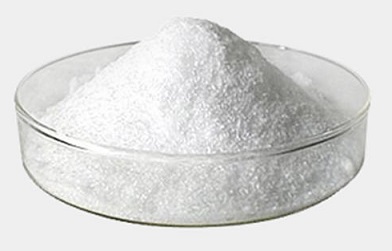Background and overview[1]
4-(1,2,2-triphenylvinyl)benzoic acid can be used in the field of organic chemistry, such as preparing an activated luminescent material, in which 4-(1,2,2-triphenylvinyl)benzoic acid is synthesized through a condensation reaction. Vinyl) benzoic acid is combined with different biomolecules to obtain biocompatible activated luminescent materials with AIE/AE characteristics. These biomolecules include highly fluorescent and water-soluble highly fluorescent materials that have excellent biocompatibility in solution and solid states. Activated luminescent molecules with quantum yield, as well as crystalline polymers that can form nanoplatelets in water-soluble media, the prepared activated luminescent materials can be used for fluorescent dyeing of living cells and sensitive detection of explosives.

Preparation[1]
4-(1,2,2-triphenylvinyl)benzoic acid is prepared as follows:
Synthesis of (1)2-(4-bromophenyl)-1,1,2-triphenylethylene
Place 10g of diphenylmethane in a two-neck reaction bottle, replace the nitrogen three times, and add 50mL of tetrahydrofuran under a nitrogen atmosphere. Slowly inject 25 mL of 2.5 M n-butyllithium in an ice-water bath at 0°C. After activation for one hour, add 20 mL of tetrahydrofuran solution dissolved in 12.2 g of 4-bromobenzophenone, and react at room temperature for 8 hours. Terminate the reaction with saturated ammonium chloride solution, extract with dichloromethane, collect the organic phase, and concentrate in vacuum. The obtained solid is washed with n-hexane and methanol to remove excess diphenylmethane. The remaining solid filter residue is put into the reaction bottle and 30 mL of toluene is added. With 20 mg of p-toluenesulfonic acid, reflux overnight, and pass the crude product through a silica gel column with n-hexane to obtain a white solid product, 2-(4-bromophenyl)-1,1,2-triphenylethylene.
Synthesis of (2)4-(1,2,2-tristyryl)benzoic acid
Add 3.96g of the above-mentioned 2-(4-bromophenyl)-1,1,2-triphenylethylene into the reaction bottle, replace the nitrogen three times, and add 50 mL of tetrahydrofuran under a nitrogen atmosphere. Slowly inject 4.25 mL of 2.5 M n-butyllithium under liquid nitrogen/acetone bath conditions at -78°C. After activation for one hour, add dry ice and react at room temperature until no more gas is released. Add dilute hydrochloric acid to terminate the reaction. Extract with ethyl acetate, collect the organic phase, concentrate in vacuum and pass through a silica gel column with n-hexane/ethyl acetate gradient to obtain a milky white solid product 4-(1,2,2-tristyryl)benzoic acid.
Main reference materials
[1]CN201410539977.0 An activated luminescent material and its preparation method
[2]CN201810036675.X A tetraphenylethylene-substituted tetraphenylporphyrin derivative and its preparation method

 微信扫一扫打赏
微信扫一扫打赏

